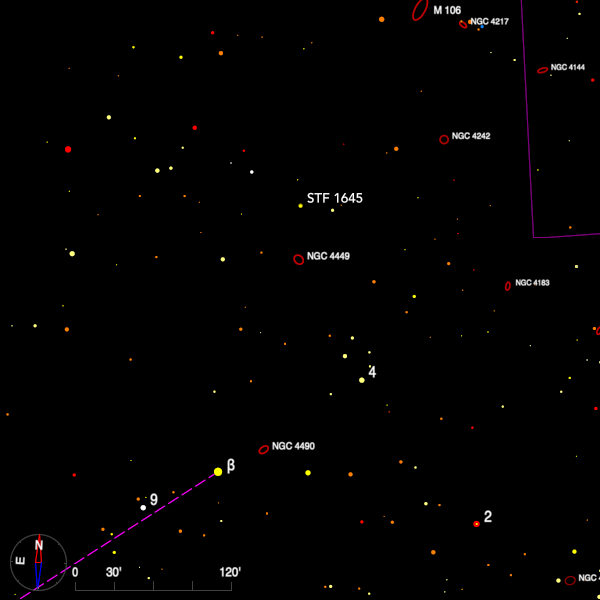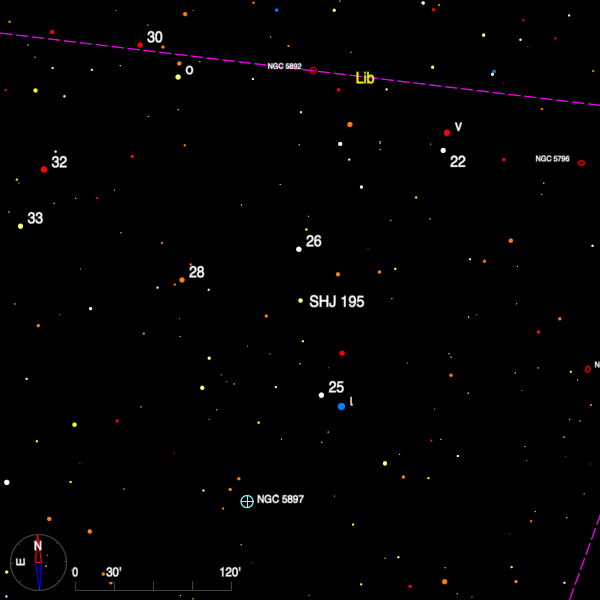April 2024 - Double Star of the Month
STF 1645 (12 28 04.45 +44 47 39.5) is a fine pair in Canes Venatici found 3.5 degrees WNW of beta CVn (chara) and also 3/4 degrees north of the galaxy NGC 4449.

T. W. Webb, in Celestial Objects for Common Telescopes reports an observation by Bird, a Victorian amateur astronomer, as a lovely pair as I ever saw
. Webb also calls them yellow which chimes with the spectral types of F9V and KV given in the Washington Double Star catalog (WDS). In 1972 using a 10-in (25-cm) Newtonian I made the colours yellow and blue, whilst Sissy Haas using a 60-mm refractor finds both are peach-white.
The stars have visual magnitudes of 7.5 and 8.1 and they are currently at 156 degrees and 9".8, but the stars were 16" apart when found by William Herschel in 1791. Nevertheless they both appear to be 147.7 light-years from the Earth and are moving almost directly south on the celestial sphere at the rate of 0".2 per year.
Two degrees north of iota Librae is a coarse triangle of stars. The most north-westerly of this trio is SHJ 195 (15 14 28.13 -18 25 42.7) which again, despite the catalogue name, was discovered by William Herschel.

Again this is a pair of F5 stars whose visual magnitudes are given as 7.5 and 8.1 in the WDS, which Admiral Smyth described as white and bluish. Although low in the Cambridge sky, I made a pair of measures in 2009 with the result 140.3 degrees, 45".59.
Gaia EDR3 records parallaxes that are the same within the quoted errors, although the error of the bright star's parallax is some ten times larger than the typical value for that magnitude. The proper motions are also very similar - the stars are moving at 0".1 per year.
Bob Argyle - Double Star Section Director